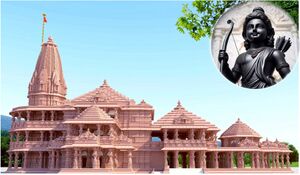Gavāmayana
By Swami Harshananda
Gavāmayana literally means ‘course of the cows or rays of the sun’.
Evolution of Sacrifices[edit]
The Vedic sacrifices and yajñas or yāgas are an ancient tradition followed by devotees. According to the Bhagavadgitā[1] sacrifices were created by Prajāpati[2] at the beginning of creation.
Sattrayāga Sacrifice[edit]
Among the various varieties of such sacrifices, the Sattrayāga is also the one. It is the one sacrifice wherein all the priests who perform it are also the yajamānas.[3] The duration of a Sattrayāga may be from 12 days to a year or more.
Fruits of Gavāmayana Sacrifice[edit]
The Gavāmayana is a typical Sattrayāga, a model for such sacrifices of one year’s duration. It may be performed for various rewards like progeny, prosperity, greatness or heaven.
Rituals of Gavāmayana Sacrifice[edit]
The sacrifice is performed in three phases. The first and the third are spread over 180 days (6 lunar months of 30 days) each. In between comes the viṣuvat or the central day. Several rites are involved in Sattrayāga. They are:
- Abhiplava - a Soma ritual
- Agniṣṭoma - a Soma sacrifice
- Daśarātra - another rite of ten days’ duration
- Udayanīya - a concluding rite of any Somayāga
References[edit]
- The Concise Encyclopedia of Hinduism, Swami Harshananda, Ram Krishna Math, Bangalore

